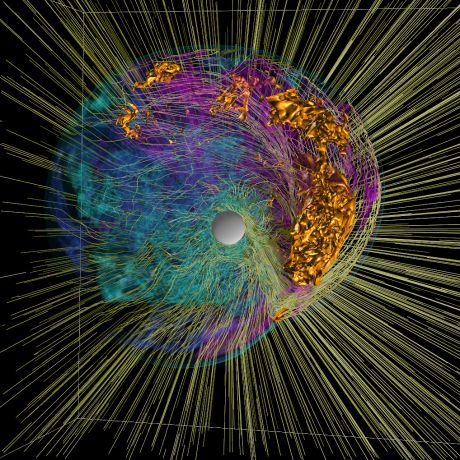The dense stream of massless neutrinos flowing away from a collapsed supernova core disturb each other, giving rise to collective oscillatory effects. The importance of these nonlinear phenomena was only recently recognised and studied.
A supernova marks the end of a massive star's life. When a massive star dies, it makes a spectacular exit – the most powerful explosion known to occur in the Universe.
Scientists believe that vast quantities of neutrinos are produced that carry off enormous amounts of energy when the star runs out of fuel and collapses. Some of these neutrinos are absorbed by in-falling material that becomes hot and expands. Eventually, the star erupts in a furious explosion.
In the fraction of outflowing neutrinos, EU-funded scientists found a unique astrophysical laboratory to probe flavour evolution of neutrinos. The project DENSE NEUTRINOS (Neutrino oscillations in dense medium: Probing particle physics together with astrophysics and cosmology) was focused on flavour instabilities induced by neutrino-neutrino interactions in the deepest stellar regions.
A valuable tool in the diagnosis of instabilities was provided by the linearised stability analysis of the neutrino equations of motion. This method helped determine the onset of flavour conversions given realistic neutrino and matter density profiles of core-collapse supernovae. Specifically, the DENSE NEUTRINOS team applied this method to remove the assumption of axial symmetry in neutrino propagation.
A multi-azimuthal-angle instability was found in addition to the multi-zenith-angle one. They compared the results with numerical simulations based on non-linear neutrino propagation equations, introducing the azimuthal angle as a variable in addition to the zenith angle. The non-uniform angular distributions were found to suppress the growth of flavour instabilities.
The neutrino and matter density profiles used in the DENSE NEUTRINOS study were obtained from models of core-collapse explosions. A surprising feature in these simulations was the emission in one hemisphere of the star being strongly dominated by electron flavour neutrinos. In the opposite hemisphere, the electron flavour anti-neutrinos and neutrinos had similar fluxes.
With observations of high-energy neutrinos from the facilities such as the IceCube experiment and with the computing power afforded by parallel architectures, scientists can now obtain better insight into the physics of core-collapse supernovae. The DENSE NEUTRINO project has taken a big step in this direction.

